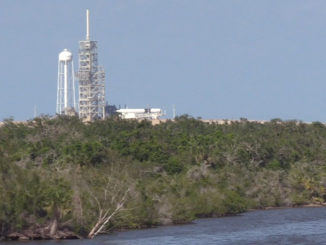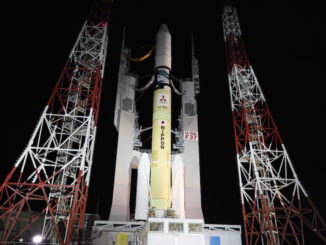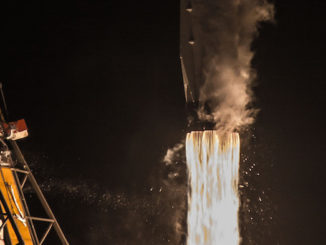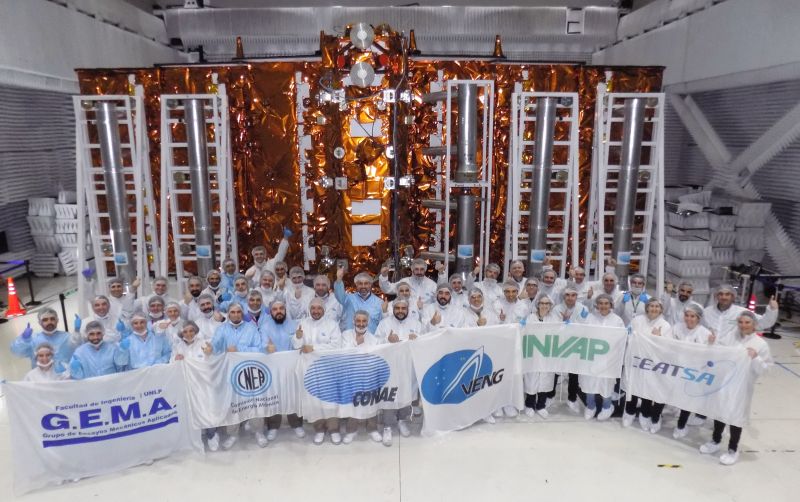
A team of 18 Argentine engineers is quarantining in Florida this week after arriving from Buenos Aires, observing coronavirus health restrictions before beginning operations at Cape Canaveral next week to ready Argentina’s second radar Earth observation satellite for liftoff as soon as July 25 on a SpaceX Falcon 9 rocket.
Officials suspended preparations for the launch of Argentina’s SAOCOM 1B radar imaging satellite in March due to concerns related to the coronavirus pandemic. The mission was previously scheduled for launch March 30.
Mission managers and engineers from CONAE — Argentina’s National Commission for Space Activities — and SAOCOM 1B satellite manufacturer INVAP arrived in Miami on Saturday aboard a commercial flight from Buenos Aires. The team members were expected to quarantine in a hotel for eight days and drive to Cape Canaveral to resume preparations for launch of the SAOCOM 1B spacecraft.
The SAOCOM 1B satellite was flown in a transport plane from Argentina to Cape Canaveral in February. After officials announced the launch delay in March, engineers placed the spacecraft in storage at a SpaceX facility in Florida to await the resumption of launch preparations.
CONAE, which manages the SAOCOM 1B mission, cited “restrictions imposed by the COVID-19 pandemic” on the launch and on operations of the satellite as the reason for the launch delay.
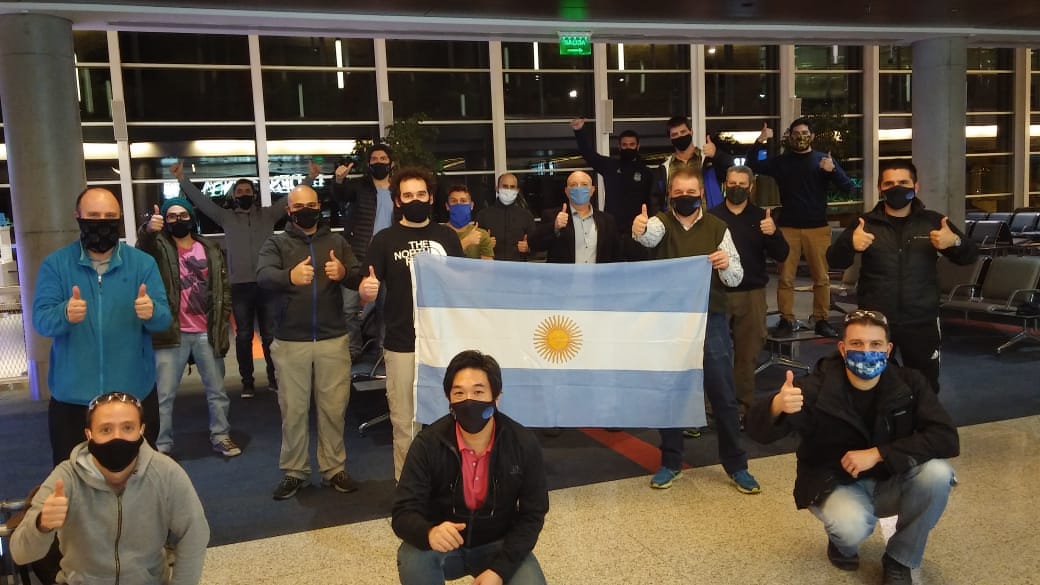
The SAOCOM 1B engineers who traveled to Florida tested negative for the COVID-19 virus before departing Argentina. They will be tested for the virus again before they are permitted to enter SpaceX facilities at Cape Canaveral, according to CONAE.
The engineers will begin tasks Monday, July 13, to ready the 6,600-pound (3,000-kilogram) SAOCOM 1B spacecraft for launch. The team will verify the health of the satellite after coming out of three months in storage, then encapsulate the spacecraft inside the payload fairing of its Falcon 9 launcher.
Argentine officials said the launch from pad 40 at Cape Canaveral Air Force Station is scheduled between July 25 and July 30. The launch time each day is set for approximately 7:19 p.m. EDT (2319 GMT).
The launch of SAOCOM 1B in late July is currently third in line on SpaceX’s busy launch manifest.
SpaceX is preparing for launch of a Falcon 9 rocket Wednesday from pad 39A at NASA’s Kennedy Space Center — a few miles north of pad 40. Another Falcon 9 is scheduled for liftoff July 14 from pad 40 with South Korea’s Anasis 2 military communications satellite.
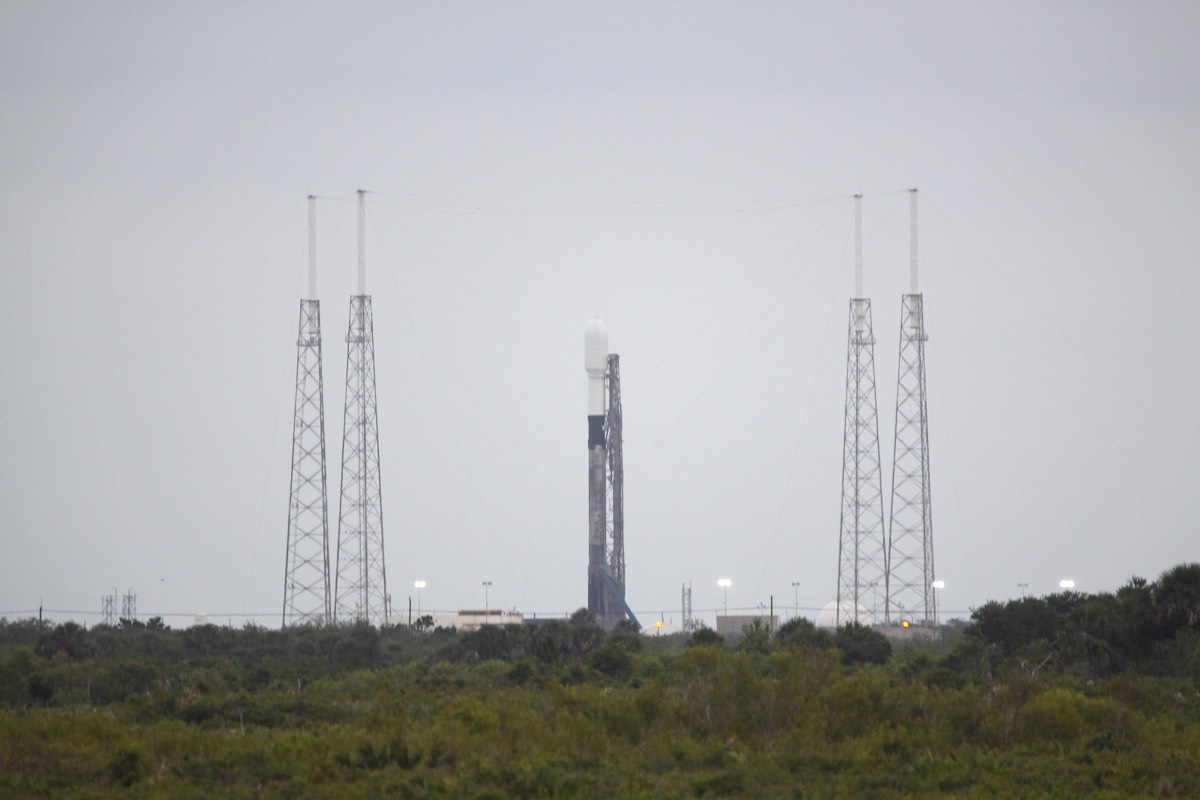
Engineers in Argentina will participate in the launch campaign remotely, assisting in virtual readiness reviews before ground controllers take command of the SAOCOM 1B satellite after launch.
SAOCOM 1B is the second of two identical radar observation satellites developed by CONAE, following the SAOCOM 1A satellite launched in October 2018 on a Falcon 9 rocket from Vandenberg Air Force Base in California.
The satellite’s purpose is to scan the Earth with an L-band steerable synthetic aperture radar, enabling all-weather imagery of the planet day and night. Radar imagers can see through clouds and are effective 24 hours a day, but optical cameras are hindered by clouds and darkness.
When it launches with SAOCOM 1B, the Falcon 9 rocket head south from Cape Canaveral to deploy the spacecraft into a polar orbit 385 miles (620 kilometers) above Earth. The flight will be the first rocket launch from Florida’s Space Coast since 1969 to target a polar orbit.
SAOCOM 1B was originally supposed to launch from Vandenberg on the West Coast, the primary U.S. launch base for polar orbit missions. SpaceX moved the launch to Cape Canaveral because the company’s launch schedule at Vandenberg is relatively quiet this year, with no Falcon 9 launches planned from there until November.
The move allowed SpaceX to temporarily reduce its staff at Vandenberg, Gwynne Shotwell, SpaceX’s president and chief operating officer, said last year.
A 220-pound (100-kilogram) commercial radar imaging satellite owned by Capella Space, a San Francisco-based company, will accompany SAOCOM 1B into orbit on top of the Falcon 9 rocket. It will be the second satellite launched for Capella, which is developing a fleet of small spacecraft it says can be tasked in real-time by customers and collect imagery day and night with a resolution of about 1.6 feet (50 centimeters).
A radio occultation microsatellite for PlanetiQ is also booked to launch with SAOCOM 1B and Capella’s radar satellite.
The GNOMES microsatellite is the first of a planned fleet of around 20 small spacecraft being developed by PlanetiQ to collect radio occultation data by measuring the effects of the atmosphere on signals broadcast by GPS, Glonass, Galileo and Beidou navigation satellites. The information can yield data on atmospheric conditions useful in weather forecasts.
Email the author.
Follow Stephen Clark on Twitter: @StephenClark1.

